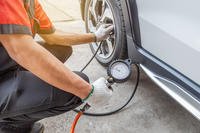Unless you’ve been living under a rock, you’ve seen our nation’s struggles with its enormous debt play out in whatever way you consume the news of the day. Unfortunately, the situation continues to deteriorate.
Closer to home, the war on debt is being waged in households across America. The key to succeeding in this battle is having a well-thought-out plan executed with commitment and determination. With that in mind, I’ve laid out six steps to consider as you map out your personal strategy to get out of debt.
Make Cash King
Things on the debt front will not improve if you continue to rack up charges. Stop. Now. Whether you freeze your cards, hide them in your sock drawer, or just leave them in your purse or wallet, become a cash buyer. If you need the convenience plastic offers, switch to a debit or pre-paid spending card. You’ve drawn a line in the sand and you don’t have the option to raise your debt ceiling.
Know What You Spend
Credit is simply a tool that allows you to spend what you don’t have. If we’re talking about a home or car, this may be a very reasonable approach. On the other hand, your ongoing living expenses (utilities, groceries, entertainment, etc.) along with those home and car payments should be less than your income. Now is the time to create a true picture of where your money goes each month by creating a budget. For this exercise, you want the cold hard truth, not a pencil drill that doesn’t reflect the reality of your spending habits. Do you spend about $5/day on soda like I do? Put it down, along with all the details of where your money goes.
Cut Back and Plus Up
There’s work to be done, debt to be paid off. So whether or not you have more month than money, it’s time to look for creative ways to spend less and bring in more. Just listing your true expenses will reveal plenty of opportunities to reduce expenses. It could be your cable or satellite TV package, brown-bagging lunches, or eating in instead of out. To add to your bottom line consider a part-time job, a garage sale, or providing simple services like dog-sitting to friends and neighbors. However you free up or find cash, don’t let it slip away into other expenditures, focus and…
Put A Bit In The Bank
If you have a cash stash, it can prevent you from having to use credit if something goes awry—the car breaks down or your water heater rusts out. Thus, your first step with the “extra” money freed up in step three should be to build a little cash cushion. I say little, because once your debt is behind you one of your goals should be to build a full-blown emergency fund stocked with the equivalent of three to six months of expenses. At first, that can seem daunting. For now, focus on setting aside a smaller amount, say one month of expenses or maybe $1,000. This will help keep you on track with step one.
Pick Your Technique
To this point, you may be making the minimum payments on your credit cards or other consumer debt. With your “found money” and a cash cushion in place it’s time to step up your efforts to slam down your debt. There are two basic approaches to eliminating your debt. As a numbers guy, I would opt for a “highest first” approach. With this technique you make minimum payments to all your credit cards except the highest interest rate card. To that one you apply everything you can until it is gone and then begin work on the next highest interest rate card. This approach will minimize the interest you pay. The other approach, typically called the “snowball” works in a similar way except you pay minimums to all but your lowest balance card and then work your way up from there. This approach offers the potential advantage of seeing progress as you may pay off individual debts faster.
Track and Reward
Regardless of your approach, set-up a timeline with where you should be and when, then hold yourself accountable to making it happen. And remember, there’s nothing wrong with a little celebration along the way—as long as it’s cash only!
Let’s face it; none of what I have proposed here would fall into the realm of rocket science. But, that doesn’t mean it’s easy. It will most definitely take a committed effort, but the payoff is big.
If you have your debt in the rearview mirror or can see it happening in the not-too-distant future, it’s time to continue the good work. Here are four things to put on your to-do list:
Bump Up Your Emergency Fund
Setting up a separate savings account where you can save the equivalent of at least three months of expenses is now a possibility.
Save For Your Next Big Purchase
While all of your extra cash was going to eliminate debt and building savings, there were probably some big-ticket items you put on hold. To keep your emergency fund intact and avoid going back into debt, start saving for them now.
Start To Build Your Retirement Fund
Systematically saving in an employer retirement plan like a 401(k), or participating in the Thrift Savings Plan through the Guard are easy ways to start to build for the future.
Polish Up Your Credit Score
Cleaning your slate as far as debt is concerned should have helped your credit score, but it’s something you should check at least once per year and definitely far in advance of a major purchase like a home. Visit www.saveandinvest.org/military to learn about getting your score for free or visit www.annualcreditreport.com to review your report and get your score for a few bucks more.
Getting out of debt can seem overwhelming. It's a lot easier when you have a clear game plan. Use these steps to guide your actions so you can see real progress.









